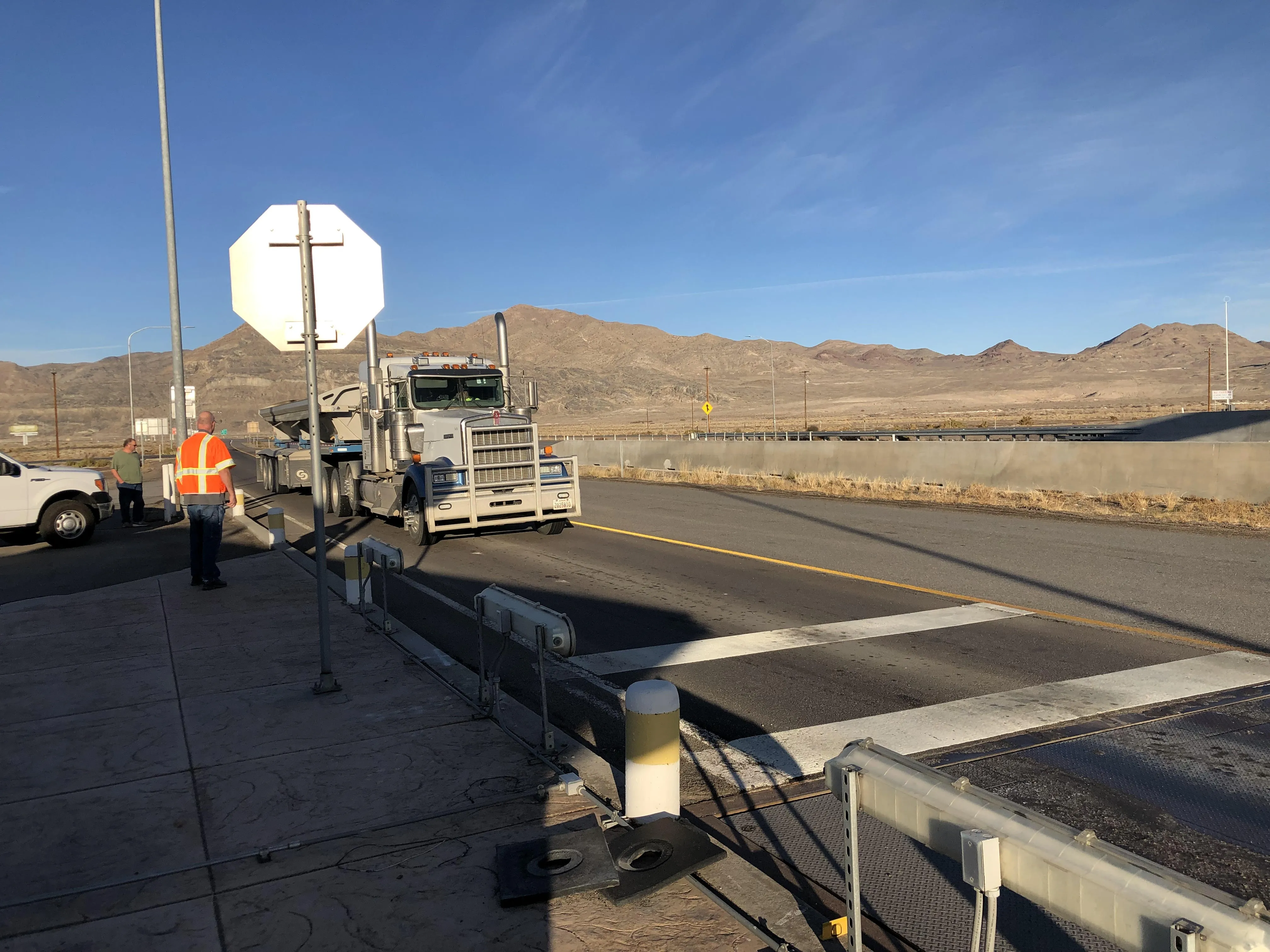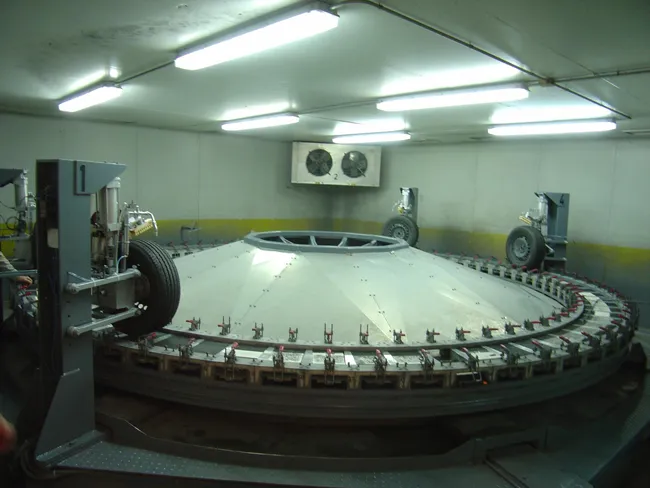May 16, 2016
A spectacular video shows footage a key bridge demolition job in the UK. The bridge crossing the busy A38 near Plymouth was demolished during a weekend possession on the 14th and 15th of May 2016. The footage has been released by 8100 Highways England and shows the old Merafield Bridge at Plympton being demolished overnight on Saturday 14th May, marking the final stage of a £6.3 million maintenance project on the A38.
A new bridge was built alongside the old structure and was opened two weeks ago. The project was completed as the Government delivers a £15 billion upgrade to motorways and major A-roads.
Approximately 50kgs of explosives were used, contained within 278 drilled locations concentrated around the supporting piers and the abutments at each end. The new concrete bridge is 80m long, 11.3m wide and made of 2,503tonnes of concrete and 401tonnes of steel.
The old bridge had to be removed as it was suffering from alkali silica reaction, commonly known as 'concrete cancer'. In time, the structure would eventually become unsafe, and it needed replacing before that happened.
Parts of the old bridge were not fully broken up in the demolition, so work to break up and remove the bridge continued into the afternoon of Sunday 15th May. Throughout the project, timing of the work has been coordinated to avoid disruption during the South West’s busy holiday season.
The scheme will be fully completed by July. Remaining work will include clearing away the debris from the demolished structure, completing drainage on Merafield Road, finishing works on the new bridge and reinstating the road markings on the A38.
A new bridge was built alongside the old structure and was opened two weeks ago. The project was completed as the Government delivers a £15 billion upgrade to motorways and major A-roads.
Approximately 50kgs of explosives were used, contained within 278 drilled locations concentrated around the supporting piers and the abutments at each end. The new concrete bridge is 80m long, 11.3m wide and made of 2,503tonnes of concrete and 401tonnes of steel.
The old bridge had to be removed as it was suffering from alkali silica reaction, commonly known as 'concrete cancer'. In time, the structure would eventually become unsafe, and it needed replacing before that happened.
Parts of the old bridge were not fully broken up in the demolition, so work to break up and remove the bridge continued into the afternoon of Sunday 15th May. Throughout the project, timing of the work has been coordinated to avoid disruption during the South West’s busy holiday season.
The scheme will be fully completed by July. Remaining work will include clearing away the debris from the demolished structure, completing drainage on Merafield Road, finishing works on the new bridge and reinstating the road markings on the A38.








